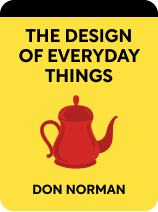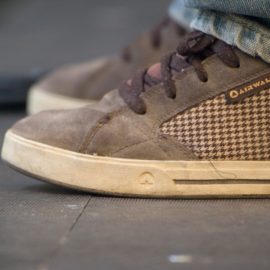

This article is an excerpt from the Shortform book guide to "The Design of Everyday Things" by Don Norman. Shortform has the world's best summaries and analyses of books you should be reading.
Like this article? Sign up for a free trial here .
What is an iterative design process? Is an iterative process the best type of design thinking?
An iterative design process is a type of design thinking where decisions and changes are made as you go, without pauses for testing. Some argue that the iterative process is best, and others believe in the traditional method.
Read more about the iterative design process and what it means.
The Cycle of Iteration and The Iterative Design Process
The double diamond model is a helpful conceptual overview of the process of design thinking, but it doesn’t give us much practical guidance for how to go about that process. In practice, there are four main tasks of design thinking: observation, idea generation, prototyping, and testing. This process is iterative, so it continuously repeats itself until the final product is developed. Human needs are complicated, so it’s hard to get any design right on the first try. Even defining the problem correctly can be difficult, since people’s observed behavior is often very different from their self report of the same behavior.
An iterative design process conflicts with traditional product development mindsets that avoid failure at any cost. Instead, iterative design is designed to produce failure as often as possible, since failure gives designers valuable feedback about what needs fixing. A popular mantra at IDEO, one of the most influential design firms in the world, is “fail frequently, fail fast.”
Is Iterative Always the Best Option?
Unlike the cyclical process of iteration, the traditional design process is linear. It often uses a “waterfall” method, where decisions are made sequentially without pausing to test and reexamine. Linear design can also use “gated” methods, where periodic management reviews that serve as a checkpoint before proceeding to the next stage of the design process.
Linear methods are traditional for a reason. They make logical sense and are usually far more cost-effective up front, since they typically proceed faster and spend less time in the observation and testing stages. The downside is that the lack of iterative testing means some design flaws may not be discovered until the product is already on the market, which can be a costly mistake.
In general, linear methods are useful for large-scale, high-budget projects, where the benefits of iteration design thinking would be outweighed by the high cost of failure. On the other hand, iterative methods are best suited for smaller projects where prototyping and testing can be done without enormous financial investment.
There are hybrid methods that balance these two approaches to maximize the benefits of each of them. An adapted gated method has tightly scheduled management reviews, but allows for free iteration design thinking between those reviews. This keeps the process moving along while still allowing designers to hone in on the true problem and best solution. It’s also possible to use iterative design for the problem definition phase of a project, then switch to a linear method for the solution development phase.

———End of Preview———
Like what you just read? Read the rest of the world's best book summary and analysis of Don Norman's "The Design of Everyday Things" at Shortform .
Here's what you'll find in our full The Design of Everyday Things summary :
- How psychology plays a part in the design of objects you encounter daily
- Why pushing a door that was meant to be pulled isn't your fault
- How bad design leads to more human errors






